
The Tantalizing Guide to Spanish (and Latin American) Cheeses
Have you heard about the spectacular Spanish cheese culture?
No?
Don’t worry, today is your lucky day as I’m introducing you to the world of Spanish cheese, the cheese culture in the Spanish-speaking world, and over twenty of the most delicious Spanish cheeses. Get ready to have your mouth watering over these amazing pictures of cheese!
¡Buen provecho!
Bon appetite!
Join 559 million people on the planet who speak Spanish!
Sign up for your free trial Spanish class today. ➡️

You might like: Saying ‘Buen Provecho’ and Other Table Manners in Spanish
Basic Spanish Cheese Vocabulary
Before starting going down the Spanish cheese rabbit hole, let’s learn some basic Spanish vocabulary about the cheese world.
| English | Spanish |
| cheese | el queso |
| fresh | fresco |
| melted | derretido |
| yellow | amarillo |
| white | blanco |
| blue | azul |
| creamy | cremoso |
| dense | denso |
| hard | duro |
| cow | la vaca |
| goat | la cabra |
| sheep | la oveja |
| milk | la leche |
| soft | suave |
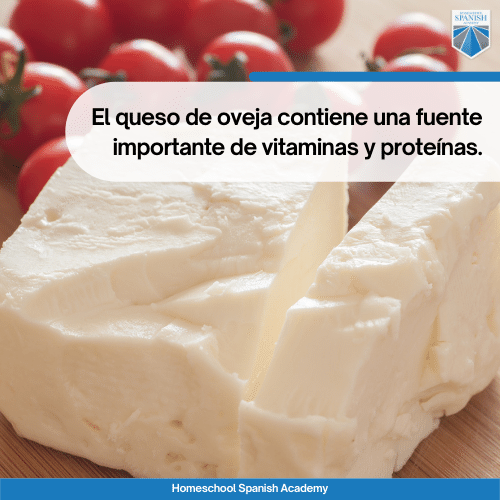
Spanish Cheese Culture
Although Spanish cheese isn’t as renowned as French cheese for instance, there’s a well-established cheese culture in the country.
Starting with the famous Spanish cheese Manchego—which enjoys “Designation of Origin,” meaning that nobody can produce Manchego cheese but the cheese-makers from La Mancha region of Spain—to the lesser-known (but equally delicious) Majorero cheese produced in the island of Fuerteventura. The fact is, cheese is a staple of Spanish cuisine.
Nevertheless, when talking about Spanish cheese, we can’t forget about the whole Latin American region which produces a wide variety of unique and exquisite cheeses of their own!
3 Main Types of Spanish Cheese
Although Spain produces more than 150 different types of cheese, they all fall into one of the following three categories depending on how long they have been aged:
- Queso fresco: meaning “fresh cheese,” is the cheese that hasn’t been allowed to age.
- Queso semi-curado: these are cheeses that have been aged from 2 to 3 months.
- Queso curado: cheese that has been aged for 4 months and more.
Note: curado means “cured,” but in this case it refers to the amount of time a cheese has been aged (and not how much salt has been used to cure it, as is the case with certain meats).
Top 10 Classic Spanish Cheese Options
This Spanish cheese list includes 10 of the most popular and internationally renowned Spanish cheeses. Enjoy!
1. Queso Manchego
Spain’s most famous cheese is produced on the land of Spain’s most famous literary character: Don Quijote de La Mancha. It’s made with sheep’s milk from a specific breed known as oveja de raza manchega or “Manchega sheep breed.”
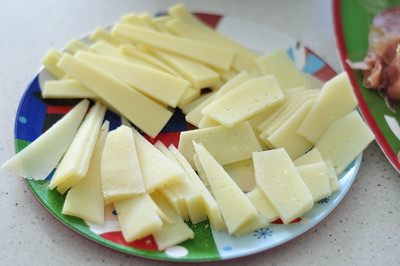
2. Caña de Cabra
Made from goat’s milk, this Spanish cheese is dense and creamy. Produced in the Spanish region of Murcia, caña de cabra is a popular ingredient of one of Spain’s most iconic delicacies: tapas!
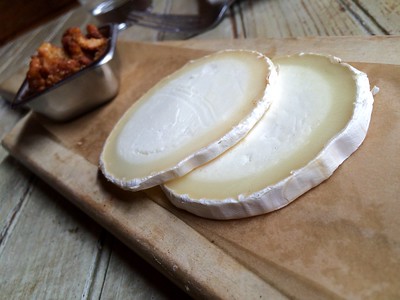
3. Queso Cabrales
Originally from the Spanish region of Asturias, this blue cheese is quite flexible as it can be made of cow, goat, or sheep’s milk, and sometimes with a mix of these 3 different types of milk. If you’re a fan of cheeses of strong flavor, this is the one for you.

4. Queso Idiazábal
Idiazábal cheese is made with raw sheep’s milk in the Basque Country in northern Spain. It requires to be aged for at least 2 months to get its characteristic taste.

5. Queso Mahón
Produced on the Balearic island of Menorca, Mahon cheese is made with cow’s milk and it’s made following the ancient tradition of Menorcan farmers. It has an intense and unique flavor that makes it a favorite among cheese connoisseurs.
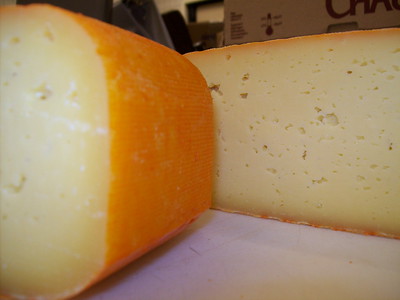
6. Torta del Casar
This Spanish cheese from the province of Cáceres in Spain was recently awarded with three medals (1 gold, 1 silver, and 1 bronze) at the World Cheese Awards and is constantly recognized as one of the best soft paste cheeses in the world.
7. Queso de Tetilla
Tetilla cheese is produced in the Spanish region of Galicia and its conic shape makes it easily recognizable. It’s made with cow’s milk and has a soft sour taste.

8. Queso Roncal
This cheese is made with raw sheep’s milk in the Roncal Valley in the Pyrenees mountains of Navarra, Spain. It’s a queso curado as it’s aged for over 4 months and it’s also one of the most popular Spanish hard cheeses.

9. Queso de Burgos
This Spanish white cheese is produced in the province of Burgos in the Castilla y León region of Spain. Originally, it was made of sheep’s milk but nowadays it’s usually prepared with cow’s milk or a mix of both.
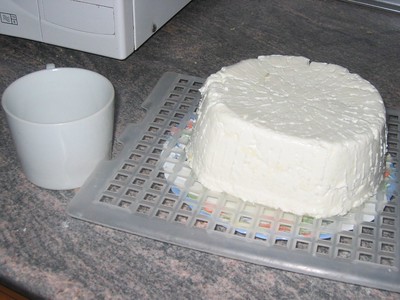
10. Queso Majorero
Produced in the Canary Islands, particularly in Fuerteventura, Majorero cheese is made with goat’s milk and has an intense smell and sour taste.
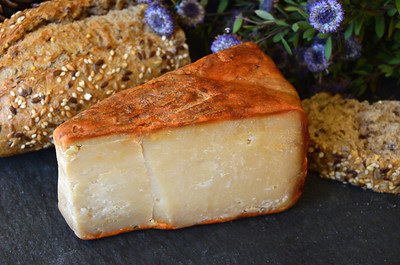
Top 5 Classic Mexican Cheese Options
Not only Spain has a well-developed cheese culture, in Mexico you can also find extraordinary cheeses.
Let’s discover the Top 5 Mexican Cheeses!
1. Queso Panela
The delicious panela cheese is a white, fresh, and soft cheese made with cow’s milk. Panela cheese is low-fat, low-calories, making it one of the favorite cheeses among Mexican nutritionists.

2. Queso Chihuahua
Brought to Mexico by the Mennonite community that was established in the northern state of Chihuahua since colonial times, this cheese is one of the best for melting and for this reason it’s widely used across Mexico to prepare quesadillas.

3. Queso Cotija
Originally from Cotija de la Paz, Michoacán, these days it’s also produced in the neighboring state of Jalisco. It’s a hard cheese made with cow’s milk and requires up to 3 months of aging to acquire its characteristic flavor.

4. Queso Oaxaca
First produced in the southern Mexican state of Oaxaca, this cheese looks like string cheese and is very popular for tacos and quesadillas.

5. Queso Enchilado
In Mexico, every different food and traditional dish seems to be spicy and cheese isn’t the exception. This cheese is covered with a paste made from red chilies which gives it a unique spicy taste that Mexican people love.

3 Best Types of Argentinian Cheese
It’s time to learn about the Argentinian cheese culture and the three best types of cheese produced in the South American country.
1. Queso Provoleta
Provoleta cheese is actually a commercial brand of a cheese officially known as “Queso Provolone Hilado Argentino,” however everyone refers to this cheese simply as “provoleta.” It has a soft and slightly sweet flavor, which makes it very popular among children.

2. Queso Chubut
This cheese was brought to Argentina by the Welsh community that settled in the Chubut river valley in the South of Argentina. It’s a semi-hard cheese made with cow’s milk and aged from 1 to 2 months.

3. Queso Cuartirolo
Cuartirolo is one of most popular creamy cheeses in Argentina. Its name comes from the “erba quartirola,” a type of grass that grows in Lombardy, Italy, which was used to feed the cows. Italian migrants brought it to Argentina, where it is often paired with white wines.
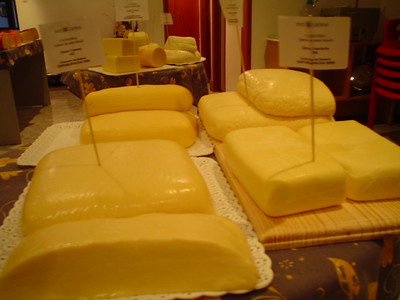
Most Amazing Cheeses in Other Latin American Countries
It’s impossible to include the best cheeses from every Latin American country in one single article and for that reason I’m including here my three favorite cheeses from the rest of the region.
1. Queso Paraguay
Made only in the South American country of the same name, this cheese is made with cow’s milk and has a flavor a little bit acidic. It’s very popular in Paraguay where it’s used for a wide variety of traditional dishes.

2. Queso Panquehue
Original from Chile, this cheese is made with cow’s milk and it has a nutty, creamy flavor. Panquehue gets paired in Chile with the outstanding diversity of good wines produced in the country and with crackers.
3. Queso Palmita
This cheese comes from Venezuela where the people use it to accompany the famous arepas among other traditional dishes. It’s a fresh cheese made with cow’s milk and it has a soft and slightly acidic flavor.
Learn About Spanish Cheese and Improve Your Vocabulary
Learning a language implies learning about a new culture. Spanish culture is widely diverse and rich, and discovering different areas of this culture can help you to increase your vocabulary, as in this case.
Discover the extraordinary Spanish cheese culture and include the new terms you learn into your Spanish conversations. That way, one cultural bit at the time, your Spanish will improve on pair with your gastronomic knowledge.
Want to learn more about Hispanic and Latin American culture? Check these out!
- 100 Easy Spanish Words for True Beginners
- Earth Day Projects for Kids + Spanish Earth Day Vocabulary
- Celebrating Culture and Joy: The Magic of Carnival in Spanish-Speaking Countries
- 15 Mouth-Watering National Dishes of Latin America
- How to Talk About the Temperature in Spanish: Fahrenheit, Celcius, and Descriptions
- Car Parts Spanish Vocabulary List: Learn Using Pictures
- Top 15 New Year’s Resolutions in Spanish
- Discovering The Mayan Languages
- Language Learning with Netflix: How to Use the Chrome Extension - April 18, 2024
- 23 Common Spanish Prepositions You Can Use Today - March 27, 2024
- 25 Common Subjunctive Phrases in Spanish Conversation - March 21, 2024








